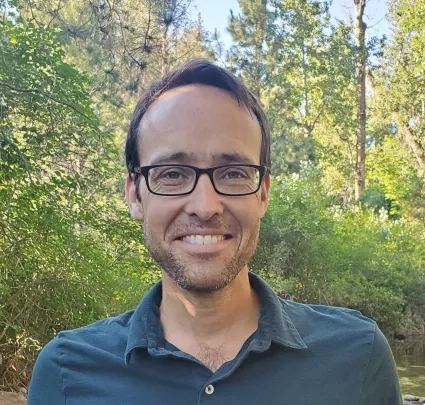- PI: Thomas Buchholz, Spatial Informatics Group
- Co-I: Max Moritz, Spatial Informatics Group
- Co-I: Graham Wesolowski, Spatial Informatics Group Natural Assets Laboratory
Wildfire probability maps are a key data source for allocating resources to manage fire adapted forests and protect communities and infrastructure. This project will build on ongoing efforts to create a US wide wildfire probability map that can be easily updated. Project implementation will involve gathering and processing a variety of climate (e.g., plant productivity, fire season severity); land use (e.g., road network, housing density), and remotely sensed (vegetation type and moisture) datasets and extending existing modeling approaches to new regions, as well as evaluating their inclusion in new domains. For instance, carbon offsets play a critical role in market-based emissions reduction systems. It is therefore crucial that agencies have a common modeling and accounting methodology that accounts for the impact that wildfire will have on natural carbon sinks over the next century. Applications for this wildfire probability map will include 1) creating a unified “model of record” that multiple states use to estimate avoided emissions benefits from fuels treatment projects, 2) allowing for more realistic forest carbon offset buffer estimates, 3) lowering the technical barrier to entry for Regional Wildfire Mitigation Programs, and others, to generate wildfire hazard models for wildland urban interface (WUI) communities.
Expanding the Regional Wildfire Mitigation Program (RWMP) Concept
- PI: Thomas Buchholz, Spatial Informatics Group
- Co-I: Max Moritz, Spatial Informatics Group
Thousands of wildland-urban interface (WUI) communities across the western US are highly vulnerable to fire-related losses and in need of a robust process for identifying and prioritizing a variety of risk mitigation measures. Due to its complexity, addressing wildfire-related risk must be approached as a coupled social-ecological system. The proposed project would leverage existing investment in the pilot effort, the Santa Barbara Regional Wildfire Mitigation Program (SBRWMP), and fund efforts to codify its approach into a well packaged toolset, while also investigating opportunities to scale it across the western US. This effort will focus on mapping and characterizing risk across three key domains: 1) Built Environment, 2) Communities, and 3) Natural Landscape. This three-pronged approach to wildfire risk mitigation takes not just fuels reduction into account, but uses a variety of metrics for vulnerability, including social equity considerations, to best prioritize a suite of measures including home hardening, community organization, land use, and policy recommendations where they will be most impactful. As an ongoing program, the RWMP then leads the implementation of these recommendations.
